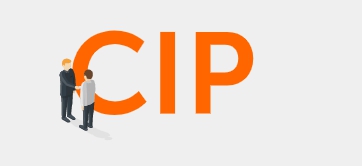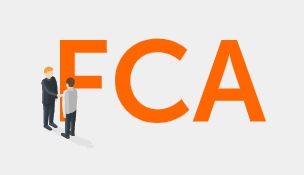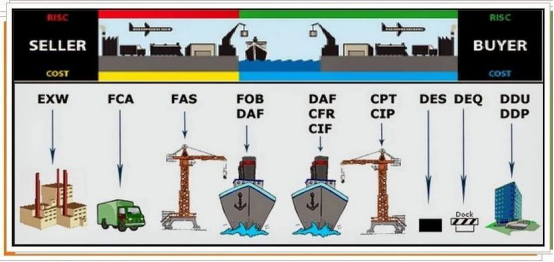
4. CIP - freight and insurance paid to
1. The seller's liability is basically the same as that of CPT, but it needs to pay for cargo insurance.
2. However, the seller only needs to purchase the minimum insurance.
3. If the buyer wants to buy higher insurance, he should handle it by himself.
At this point, the buyer will begin to bear all the risks: when the buyer's carrier receives the goods. wps31.png
5. Dat - terminal delivery
1. The Seller shall bear all expenses and risks in the process of delivering the goods to the agreed terminal.
2. The terminal of goods transportation may be airport, warehouse, highway or container yard.
3. The Seller shall be responsible for handling the export customs clearance procedures of the goods and unloading the goods at the transportation terminal.
4. The buyer shall go through import customs clearance and pay all relevant taxes.
At this point, the buyer will begin to take all the risks:
At the terminal of cargo transportation.

6.fca - delivery carrier
1. the Seller shall be responsible for delivering the goods to the buyer's carrier at the agreed point.
2. the Seller shall also handle the customs clearance procedures for the export of goods.
At this point, the buyer will begin to take all the risks:
When the buyer carrier receives the goods.
7.cpt - freight to
1. the Seller shall bear the same responsibilities as the FCA, but shall pay the cost of transporting the goods to the destination.
3. the Seller shall be responsible for customs clearance for export in the same situation as the FCA.
At this point, the buyer will begin to take all the risks:
When the buyer carrier receives the goods, the buyer will be responsible for all the disposal of the goods in the same way as EXW factory delivery.
8.fas - delivery by the side of the ship
1. the Seller shall bear all costs and risks before delivering the goods to the side of the vessel designated by the buyer.
2. the buyer shall bear corresponding risks and handle customs clearance procedures for export and import when goods are delivered.
At this point, the buyer will begin to take all the risks:
When the goods are delivered to the side of the vessel designated by the buyer.
9.fob - FOB
1. the Seller shall bear all costs and risks before loading the goods on the vessel designated by the buyer
2. at this time, the Seller shall also handle the export customs clearance procedures.
3. the buyer will bear all relevant responsibilities when the goods are delivered to the ship.
At this point, the buyer will begin to take all the risks:
When the goods are delivered to the vessel designated by the buyer.
10.cfr - cost plus freight
1. the Seller shall bear the same responsibilities as FOB, but also must pay for the cost of transporting the goods to the port.
2. as with FOB, the buyer will bear all relevant responsibilities when the goods are delivered to the ship.
At this point, the buyer will begin to take all the risks:
When the goods are delivered to the ship.
11.cif - cost, insurance and freight
1. the obligations of the seller are basically the same as that of CFR, but also the cargo insurance premium.
2. the seller only needs to purchase the minimum insurance insurance as the case of cost and CIF.
3. if the buyer needs higher insurance, it shall handle and pay for it.
At this point, the buyer will begin to take all risks: when the goods are delivered to the ship.
Class E departure
EXW ex works class E
F main freight not paid
FCA Free Carrier
FAS Free Alongside Ship
FOB Free On Board
Main freight paid for category C
CFR Cost and Freight
CIF Cost,Insurance and Freight
CPT Carriage Paid to
CIP Carriage and Insurance Paid to
Class D arrival
DAT Delivered At Terminal
DAP Delivered At Place
DDP Delivered Duty Paid



